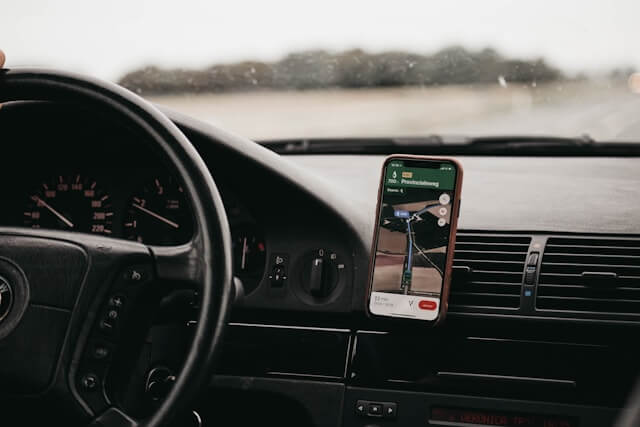The important points
- Usage-based car insurance is a pricing method that tracks a driver’s habits behind the wheel and adjusts premiums accordingly.
- While UBI can save some drivers money, it depends on how they drive — unsafe driving leads to increased premiums.
- UBI is only available from certain providers; Square One does not offer UBI at this time.
What is usage-based insurance?
Usage-based car insurance (UBI) is one approach to car insurance pricing. It’s also called pay-as-you-go, pay-how-you-drive, or telematics. UBI uses various methods to directly track a driver’s behaviour while they’re on the road.
While sometimes people refer to UBI as “telematics,” this term actually refers to the tracking technologies themselves. Telematics may monitor speed, trip distance, idling time, braking, acceleration, fuel consumption, and more.1 Based on telematic data, the insurer adjusts the driver’s car insurance premiums. Theoretically, smooth, careful driving results in lower insurance costs. On the other hand, driving habits that the insurer deems unsafe cause prices to increase.
How does usage-based insurance work?
There are several methods that insurers may use to collect the data they need for UBI. Each uses some combination of GPS and the vehicle’s built-in technology:
- Black box devices collect data specifically about accidents. They require someone to manually download the data afterwards. These are not common devices for UBI programs.
- Dongles are devices the insurer provides that plug into the vehicle’s onboard computer. They collect many types of data about the vehicle’s performance, like acceleration, top speed, and more. Often, they can transmit data automatically to the insurer.
- Embedded telematics monitor vehicle information, just like plug-in dongles. Modern vehicles have advanced computer systems that monitor all sorts of vehicle data — these systems can be used for UBI, too.
- Apps use a smartphone’s internal systems (GPS, accelerometers, gyroscopes, etc.) to measure how far and how fast a phone is moving. Basically, it uses the phone’s movement as a proxy for the car it’s sitting in.2
Smartphone-based UBI is typical for most present-day programs. One benefit of this method is that it helps the insurance company know who’s driving the car at any given time. Most apps also provide updates as to how the driver is performing, allowing them to adjust their habits.
The details of each company’s UBI program vary. Some basic programs monitor little more than the distance driven. Others UBI programs track detailed information, which could include:
- The car’s movements, including:
- GPS positioning
- Top speeds
- Braking and acceleration
- Directional changes and cornering speed
- Time of day
- Trip length, and time between breaks
- Smartphone usage (whether the driver accesses their phone while driving)
Which information to collect and how to use it is up to each insurance provider. Smooth driving, including gradual acceleration and breaking and low-speed cornering are all good habits. Staying under the speed limit is never wrong. Driving during daylight hours is better than driving in the dark. On long trips, frequent rest stops are a positive. And (of course) avoiding distracted driving by not accessing one’s phone while driving is a no-brainer.
Depending on the program, the data may be analyzed once per year, with any discounts or surcharges applied at policy renewal time. Other companies recalculate premiums multiple times throughout the year.
UBI differs from traditional car insurance mainly in how detailed the usage-based rating is. All car insurance policies require you to disclose how you use the insured vehicle. But, traditional policies usually only need a broad definition like “I commute daily, under 10 kilometres” or “I only drive occasionally for pleasure use.” UBI literally tracks how and when you drive at all times.
Where is usage-based insurance available?
UBI is very common throughout the United States, but is currently only available in six Canadian provinces:
- Alberta
- Ontario
- Quebec
- New Brunswick
- Prince Edward Island
- Nova Scotia
Even in these provinces, not every provider offers a usage-based car insurance option.
In the provinces with public insurers (BC, Saskatchewan, and Manitoba) there has been some experimentation with UBI. For example, ICBC offers discounts for drivers who drive less than 15,000 km per year. Though this isn’t a telematics-based program — drivers simply provide photos or other proof of their odometer readings.3 In Saskatchewan, SGI ran a pilot UBI program for motorcycles in 2013.4
At this time, Square One does not offer usage-based car insurance.


